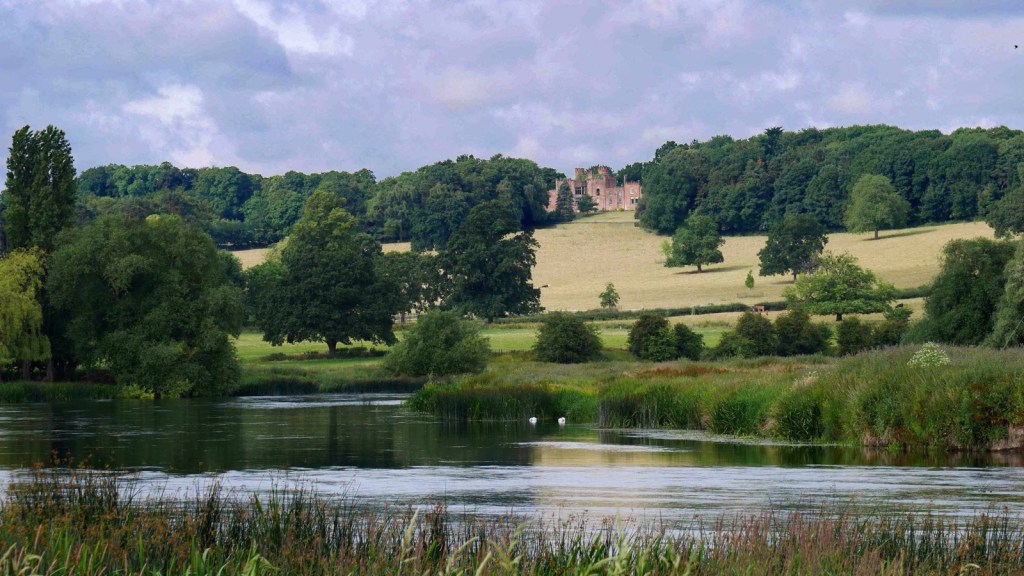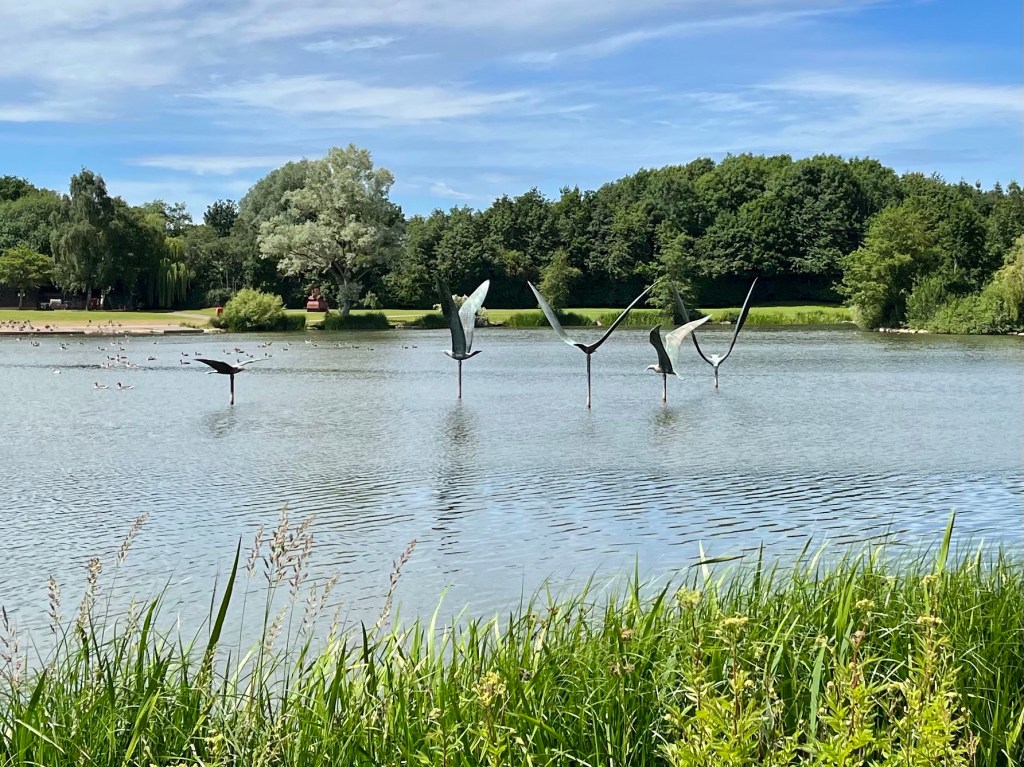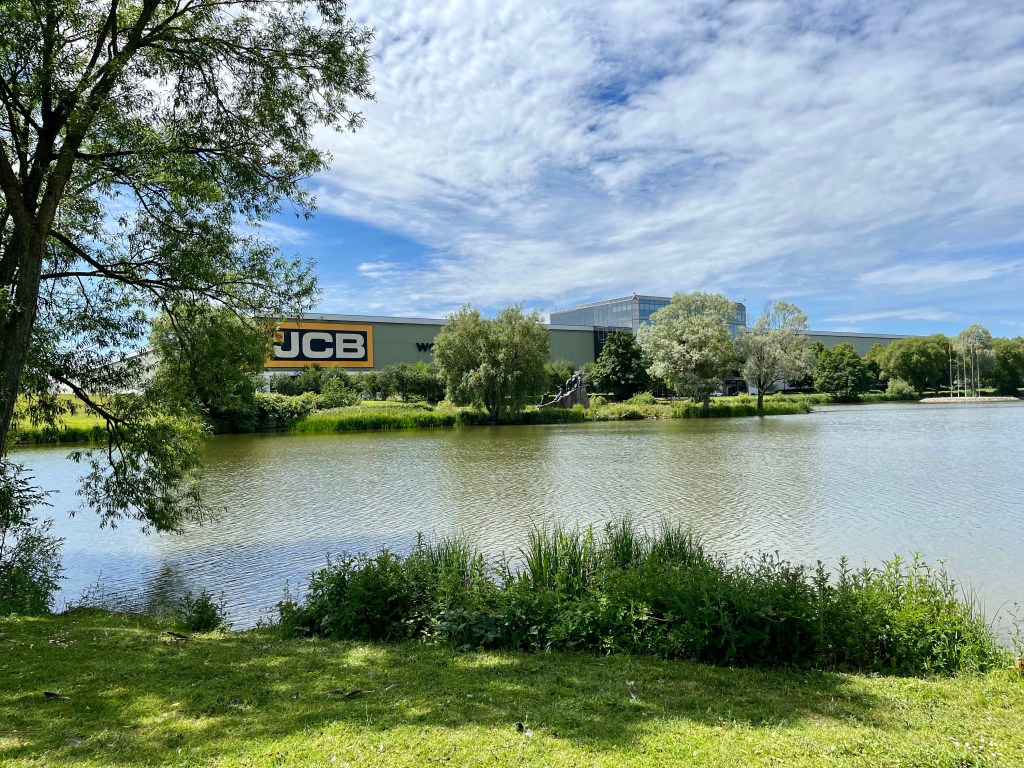“The sight of a castle does not necessarily mean that there is a king.” Dennis Adonis. I think I could Google all day long and not find a more appropriate quote for a post about one of our local landmarks, Bladon Castle.
The story starts at nearby Newton Hall, now the Mercure Newton Park Hotel*.

Back in the late 18th century it became fashionable for successful businessmen and brewers to move away from the nearby town of Burton and build properties in the surrounding countryside. A forerunner to ‘Escape the the Country’ perhaps. One such wealthy gentlemen was local solicitor and entrepreneur Abraham Hoskins. He built Newton Hall and also created a picturesque landscape around it which included the obligatory ornamental lake, parkland, walled garden and estate cottages, etc.
Last but not least, and at the request of his son, Abraham junior, he built a folly, namely Bladon Castle.

Designed to give the appearance of a large castle with battlements, the structure was in reality little more than a single long wall, rather like a film set. It provided a focal point from the hall, and perhaps a destination for walks or picnics and entertaining, but most of all, it was a structure designed to impress family, friends and villagers. However, the ‘fake castle’ was not well received by locals, many of whom lived in basic farm cottages and did not like the idea of such an extravagant folly.

The reason for the next chapter in the of the life of the folly is unclear, but possibly brought about by family financial problems, (perhaps building such a large and detailed folly overstretched them). Hoskins needed to vacate Newton Hall and he quickly arranged for basic rooms to be built at the rear of the facade. This wasn’t popular with the family and servants as it was probably very cold, there was no good access or running water and daily supplies had to be hauled uphill by mule.

Hoskins senior died soon after moving into the castle and his son took the reins but things went from bad to worse and in 1836 he was forced to sell Newton Hall to his neighbour, Lord Chesterfield and move away. Lord Chesterfield rented Newton Hall to Burton brewer, William Worthington and in 1890s another local brewer, Richard Ratcliff of the highly successful merged Bass, Ratcliff and Gretton Brewery, purchased the property.
Ratcliff’s brewing partner, John Gretton moved into Bladon Castle. By this time, the property had been made much more comfortable and was equipped with efficient pumps to supply water and had a good access track.
The War Office requisitioned Bladon Castle during the Second World War and at some stage in the war it was used to house American soldiers. It later became a separate entity from the hall and returned to private ownership. Newton Hall was sold in 1966 and became the Newton Park Hotel.
Bladon castle is still a private residence and does not have public access to the surrounding land. Most of the photos of the castle shown above are the brief glimpses of it from the main road but one of my favourites is a more distant view of the structure on top of the hill rising above the River Trent.

* For many years the Newton Park Hotel was a successful conference and wedding venue. Like many similar businesses the pandemic had an adverse effect and in recent months it has been used by the government to house asylum seekers. However, last week it was announced that it has been sold by Mercure to another hotel chain for £2.2 million so we await with interest to see what the next chapter in the life of the building brings.







